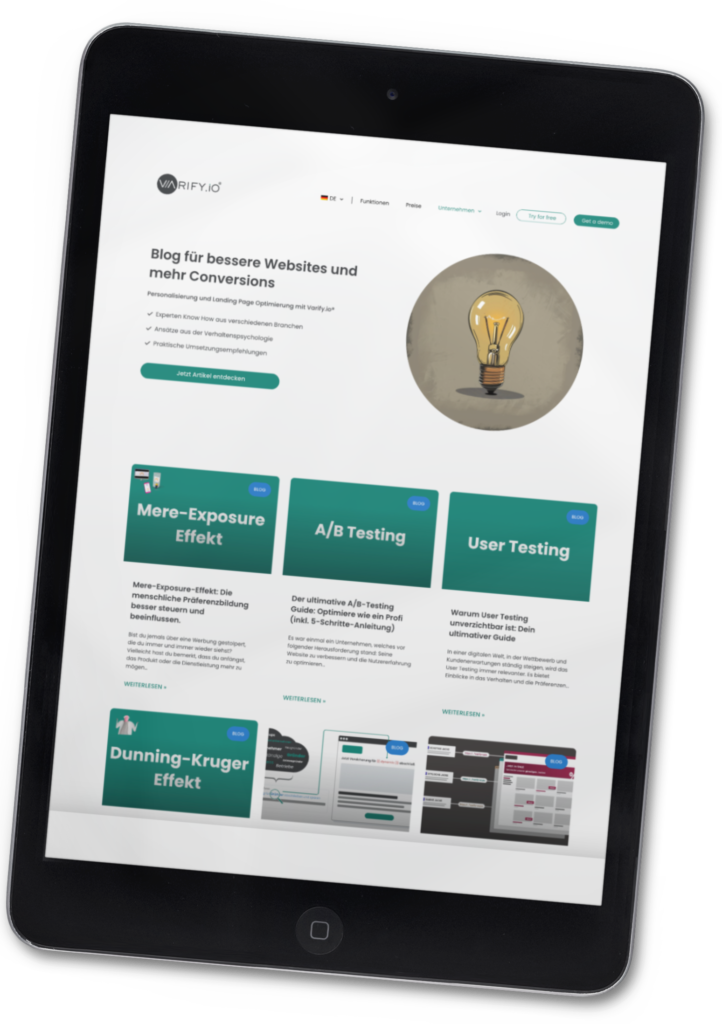Scarcity, often translated as "scarcity" in German, is a powerful tool in the arsenal of modern marketing. This proven strategy, based on our natural human tendency to desire what we can't have, has the potential to drive customers to action and increase conversion rates.
But how exactly is Scarcity defined and how can it be used to improve our conversion optimization?
Deeper Insight into Scarcity
Scarcity refers to the tactic of promoting a purchase decision through a sense of urgency or limitation. In its simplest form, Scarcity is the principle of limited availability. We are programmed to overestimate the value of things when we perceive them as rare or hard to get.
Whether it's a limited time offer, only a few items left in stock, or an offer that's about to end, Scarcity can be integrated into a sales strategy in many ways. For example, companies like Amazon and Booking.com have been able to noticeably increase their sales by using Scarcity.
Why does scarcity work as a psychological trigger?
The effect of scarcity is based on deeply rooted psychological principles. Humans are evolutionarily conditioned to avoid losses. This is closely linked to the phenomenon of FOMO (Fear of Missing Out).
When we see that a product is almost sold out or an offer is about to end, it triggers in us the desire to act immediately to avoid this impending loss.
Application of Scarcity in Conversion Optimization
In the context of conversion optimization, scarcity is a critical tool. By implementing Scarcity tactics into web design and sales strategies, businesses can significantly increase their conversion rates. Some ways to apply Scarcity are:
- Countdown Timer: A countdown timer on a product page creates a sense of limited availability and pushes users to buy immediately.
- Stock displays: By displaying the remaining quantity of a particular product, you create urgency and encourage purchase decisions.
- Flash sales: Short sales promotions with heavily reduced prices encourage customers to grab them immediately.
Case studies: Scarcity in action
Amazon is a prime example of the successful use of scarcity. With messages like "Only X items left in stock" or "Offer ends in X hours", Amazon uses Scarcity to improve its conversion rates.
Another notable case study is Booking.com. The travel platform shows users how many other people are looking at the same hotel room or how many rooms have already been booked. This promotes the impression of scarcity and encourages users to complete their booking immediately.
Scarcity tactics and their application
Scarcity is effective in many forms:
1. time limit: This can be a limited time offer or a countdown to the sale. Example: "Sale ends in 3 hours".
2. limited quantity: By displaying the remaining quantity of a product, the feeling of scarcity can be created. Example: "Only 3 items left in stock".
3. Exclusive offer: This could be a special offer that is only available to a limited number of customers or for a limited time period. Example: "Exclusive for the first 50 buyers".
Choosing the right scarcity tactic depends on your product and your target audience. Experiment with different approaches to find out what is most effective for your customers.
Common challenges and solutions in the application of Scarcity.
Although Scarcity is an effective tactic, it also presents challenges. One of them is the risk of negative perception. If customers feel that scarcity is artificially created, it can undermine trust in your brand.
To minimize this risk, transparency is key. Make sure your offers are authentic and that the scarcity information you share is true. This will help you balance scarcity with customer satisfaction.
Conclusion
Scarcity is a powerful tool in conversion optimization. By creating a sense of urgency, businesses can significantly increase their conversion rates. With a transparent and thoughtful application of Scarcity, you can use human nature to your advantage and drive your business to success.
Use Scarcity to increase your conversion rates and accelerate the growth of your business. Remember, scarcity shouldn't be a trick, it should be an honest tactic to help your customers understand the value of your products and encourage them to act faster. With the right scarcity tactics, you can use human perception to your advantage and drive your business to success.
